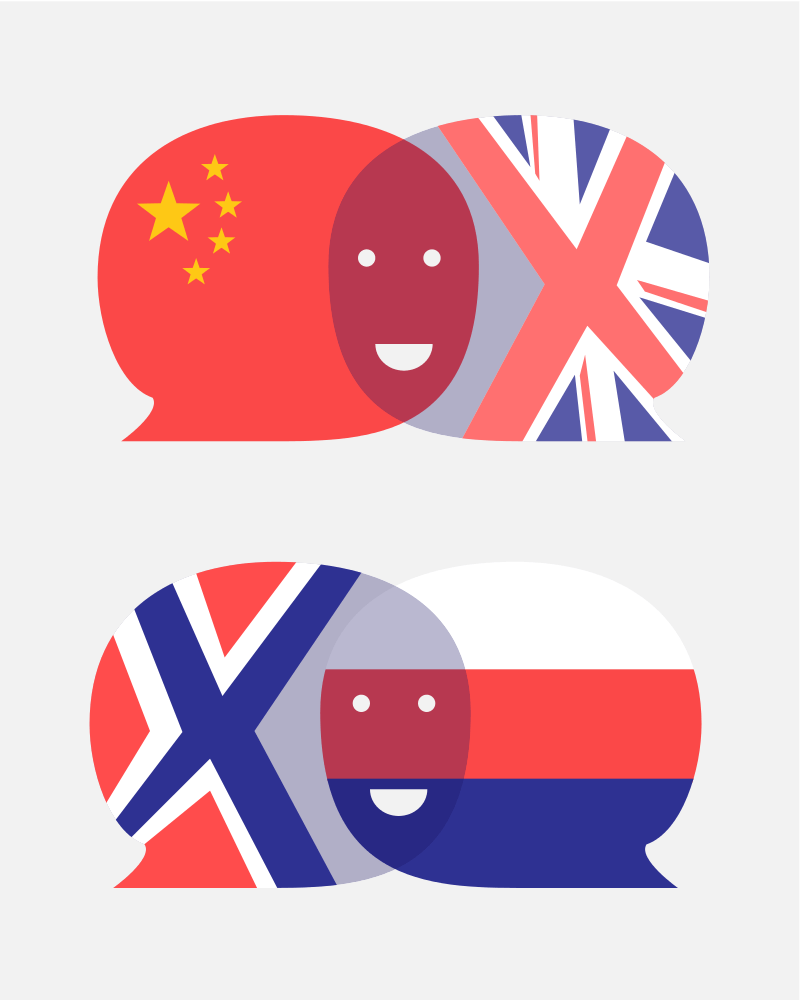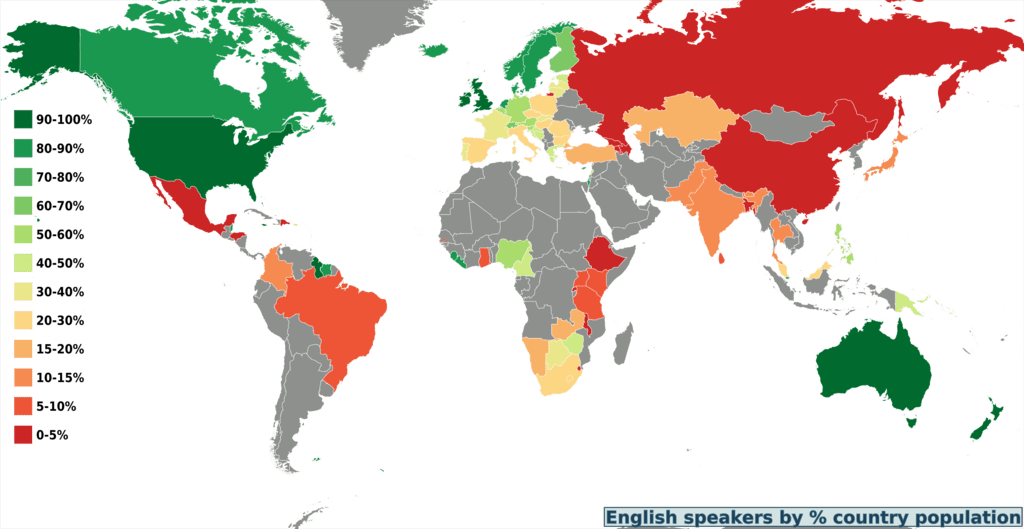The key difference between pidgin and lingua franca is that a pidgin is a simplified form of a language created for communication between people who speak no common language whereas a lingua franca is a language used for communication between people who do not speak one another’s native language.
Therefore, pidgin is a new language created from two existing languages as speakers do not speak a common language whereas lingua franca is an already existing language that is spoken by all parties involved. A pidgin can, however, serve as a lingua franca, but not all pidgins are lingua francas, nor all lingua francas are pidgins.
CONTENTS
1. Overview and Key Difference
2. What is a Pidgin
3. What is a Lingua Franca
4. Relationship Between Pidgin and Lingua Franca
5. Side by Side Comparison – Pidgin vs Lingua Franca in Tabular Form
6. Summary
What is a Pidgin?
A pidgin is a simplified form of a language used for communication between people with different languages. A pidgin develops from a mixture of two languages; therefore, it contains borrowed vocabulary and simple grammar. A pidgin usually develops when two groups of people who do not speak the same language need to communicate with each other. It is common in situations such as trade. Moreover, a pidgin will contain words, sounds, or body language from various languages. Some examples of English pidgins include Chinese Pidgin English, Hawaiian Pidgin English, Nigerian Pidgin English, Queensland Kanaka English, and Bislama.
Main Features
- Limited vocabulary
- Simple grammar (lack of conjugation, tenses, cases, etc.)
- No writing system

Figure 01: Pidgin is a mix of Two Languages
Moreover, a pidgin is not a first language or native language of any community. There are several possible fates for a pidgin. Over time, it may go out of use as speakers learn an established language that serves as a language for communication. Hawaiian pidgin, which has now been displaced by English, is an example for this. Meanwhile, some pidgins can remain in use for centuries.
Furthermore, pidgins can also turn into a creole. It happens when the children in a pidgin-speaking community speak nothing but the pidgin to communicate with. In this case, pidgin turns into a real language as these speakers fix and elaborate the grammar and expand the vocabulary. When a pidgin becomes a native language, we usually call it a creole.
What is a Lingua Franca?
A lingua franca is a language or way of communicating between people who do not speak one another’s native language. Bridge language, link language, and common language are alternative names for lingua franca. For example, imagine a conference for which experts all over the world attend. Since there are attendees with various native languages, the conference will be conducted by a language (or few languages) that is understood or known by most of them.
Furthermore, it is important to note that lingua franca refer to any language that serves as a common language between people who do not share a native language. Therefore, a pidgin can also serve as a lingua franca. A lingua franca can also be a vernacular language; for example, English is the vernacular language in the United Kingdom, but it is also used as a lingua franca in South Asian countries. Languages like English, French, Spanish, Arabic, and, Mandarin Chinese are the main languages that serve as a lingua franca in the modern world. Latin, however, was one of the most widespread of the early lingua francas.

Figure 02: English Language Usage Around the World
Furthermore, the term lingua franca itself originates from Mediterranean Lingua Franca, which was the language many people spoke in Mediterranean ports, which were active centres of trade between people with very different native languages.
What is the Relationship Between Pidgin and Lingua Franca?
- Pidgin and lingua franca help people with different native languages to communicate with each other.
- A pidgin can serve as a lingua franca.
What is the Difference Between Pidgin and Lingua Franca?
Pidgin is a language that has developed from a mixture of two languages and used as a way of communicating by people who do not speak a common language. On the other hand, Lingua franca is a language that serves as a tool for communication between groups of people who speak different native languages. Therefore, this is the key difference between pidgin and lingua franca. A further difference between pidgin and lingua franca is that while pidgin is not a native language of any community, lingua franca may be a native language of a particular community. English, Spanish, French, Arabic, and, Mandarin Chinese are some languages that serve commonly as lingua francas whereas Chinese Pidgin English, Hawaiian Pidgin English, Queensland Kanaka English, and Bislama are some examples of pidgins.
Moreover, the birth of a pidgin language involves creating a new language from two existing languages as speakers do not speak a common language. However, lingua franca is not a new language (when it is not a pidgin); it is usually an already existing language all parties present speak. So, this is also a difference between pidgin and lingua franca.
The below infographic on the difference between pidgin and lingua franca explains these differences in detail.

Summary – Pidgin vs Lingua Franca
A pidgin is a simplified form of a language created for communication between people who speak no common language. A lingua franca is a language for communication between people who do not speak one another’s native language. Therefore, this is the key difference between pidgin and lingua franca. While a pidgin can act as a lingua franca, not all lingua francas are pidgins.
Reference:
1.“Lingua Franca.” Wikipedia, Wikimedia Foundation, 10 Jan. 2019. Available here
2.Nordquist, Richard. “What Is a Pidgin in Language Studies?” Thoughtco., Dotdash. Available here
Image Courtesy:
1.”Pidgin tszyantong”By Tsz Yan Tong – Own work, (CC BY-SA 4.0) via Commons Wikimedia
2.”World map percentage english speakers by country”By Felipe Menegaz, Peter Fitzgerald (CC BY-SA 4.0) via Commons Wikimedia
ncG1vNJzZmivp6x7pbXFn5yrnZ6YsqOx07CcnqZemLyue8OinZ%2Bdopq7pLGMm5ytr5Wau268yJ2eoqZdlrulecuipaCtkWKzs63NnJho